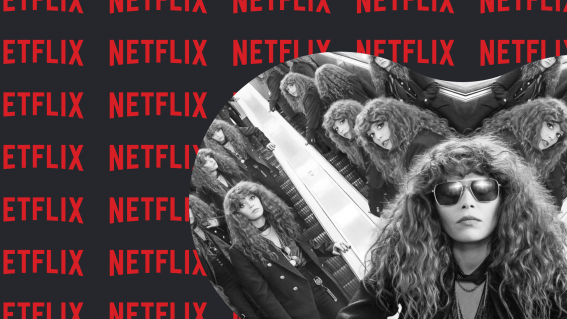DreamWorks is making death fun again

With The Wild Robot currently hitting it off with audiences of all ages, Liam Maguren celebrates how the film (and another recent DreamWorks hit) is embracing the silly side of death.
Look, death’s not fun. It’s a heavy thing to talk about, especially to kids. But death is also undeniable and any attempts to deny the idea from entering young minds is futile. They’ll eventually experience the loss of a relative or a family pet—some sooner than others—all while flies get caught by spiders, birds eaten by cats, and cute baby lambs freeze to death during the winter month.
That’s nature, baby. Death is a significant characteristic of the natural world and classic animation studios like Disney presented the concept to children in ways that were both affectingly direct (re: Bambi) and enjoyably silly (re: Silly Symphonies’ The Skeleton Dance). But somewhere down the line, family films became more sanitised—often for the better, occasionally not—and the subject of dying isn’t as prevalent.
I’m not saying the Minions movies could use more mortality, as much as I want to kick those yellow sentient bagpipes into the sun. And modern family films like Pixar’s Soul still tackle death in meaningful ways. It’s also worth noting that 2019’s The Lion King became a colossal box office hit, and that showed Simba crying over his dead dad’s corpse again—this time in photorealism.
But death doesn’t have to be shown seriously to have a serious impact on a family film’s story. The Wild Robot gets this. Boy, does it get it.
The opening minutes are an incredibly silly, fun-sized ode to death. As our titular robot Roz (Lupita Nyong’o) tries to make sense of the island she’s washed up on, she experiences a crash course in the food chain, to where we see one poor bird get its head lobbed off to comedic effect and the Catherine O’Hara-voiced mama opossum acknowledge the off-screen killing of one of her young with a nonchalant quip about going from 7 to 6 kids. It’s brutal, hilariously so.
It took me right back to the impressive body count of another recent DreamWorks hit: 2022’s Puss in Boots: The Last Wish. The film’s henchmen, The Baker’s Dozen, get deaths that, in writing, sound absolutely horrific—a few fall to their death, others explode, some get eaten alive—but it’s amazing how goofy sound effects, a bit of confetti, and excellent comedic timing sideline the morbidity to make it all very, very funny.
But death isn’t just a gag in The Last Wish; it’s a very real threat that needs to be displayed. In the film, Puss is on the last of his nine lives. Having spent the previous eight being a reckless jackass, this sudden confrontation with his mortality brings out his anxiety as well as the very personification of death in The Big Bad Wolf. This excellent villain is no joke, nor is the film’s tender and tasteful depiction of Mr. Boot’s panic attacks.

Puss in Boots: The Last Wish
The Last Wish is all about confronting—not conquering—death, and it wouldn’t have worked as a broad family film had it not also found the fun in depicting it. The Wild Robot also indulges in the silly side of demise, but for a story centred more on life.
Roz eventually finds a directive: to care for the only survivor in a family of geese she accidentally crushed. This gosling, Brightbill (Kit Conner), is the runt of the litter. He wouldn’t survive the trials of nature by natural means, but with a state-of-the-art assists-with-anything robot by his side, he has a decent shot at life.
This largely involves Roz teaching Brightbill how to fly in time for migration, albeit in a very mechanical way. While it’s deeply funny to see a wild bird attempting flight by overanalysing his biomechanics and hitting KPIs, it would make for a low-stakes story in a typical family film. But The Wild Robot’s cavalcade of cartoonish death brings out the fragility of Brightbill’s situation and his need to fly as a means of survival.
It’s why the film’s big migration scene hits with such emotional, lip-quivering force.

The Wild Robot also indulges in some cheesier messaging about the importance of love and community. It doesn’t fully escape feeling like bumper sticker morals typical of mainstream family films, but that gooey softness complements nicely with the film’s edgier aspects—much like how the beauty of nature complements its brutality.
There’s also something to be said about the film’s gentle way of acknowledging our current inability/unwillingness to adapt to the climate crisis. There’s a quiet grimness to the sight of sunken cities, but also a pragmatic perspective on the human race’s ability to adapt to such futures.
Writer-director Chris Sanders has always been one to tell stirring stories about humanity’s need to cooperate with the natural world and all its creatures. Consider the bonds between Lilo and Stitch or Hiccup and Toothless, the survival through unity seen in The Croods and 2020’s The Call of the Wild.
The Wild Robot could very well signal the peak of Sanders’ storytelling ability. Not only is it a story about community and cooperating with nature, but it also adds a lovely bit of commentary about how we cannot survive on logic alone, and it does this through the optimistic thought of an AI learning humanity and the value of life.
And no film can fully capture the value of life without showing the reality of death. Silly, silly death.




















